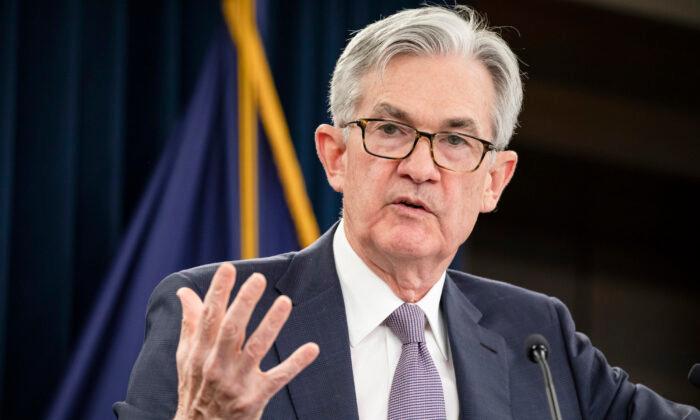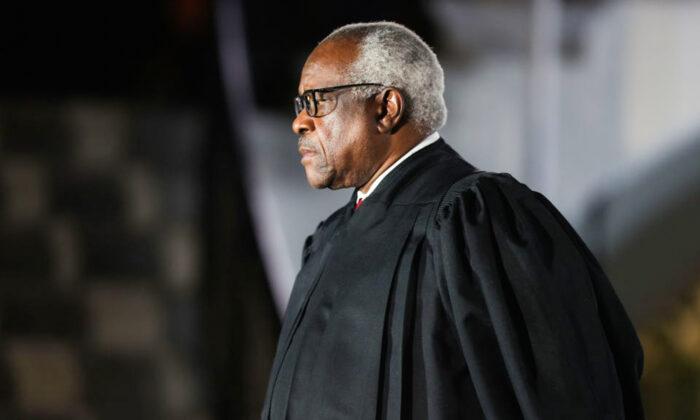The fiscal response during the COVID-19 recession has been unprecedented. Passage of the CARES Act pumped more than $2 trillion into the economy. CARES Act II will likely keep the pump primed.
But for this fiscal stimulus to have its intended impact of fueling the nascent recovery, the government needs a white knight. That knight has taken the form of Jerome Powell, chair of our nation’s central bank—the Federal Reserve (Fed). If it weren’t for the Fed being at the ready to sop up all those new government bonds being sold to fund the growing national debt, the fiscal impact of the CARES Act and probable CARES Act II would be muted.
It’s not a coincidence that as U.S. government sales grew by more than $2 trillion to fund the CARES Act, so too did the Fed’s balance sheet as it purchased all those bonds. This unmistakable evidence of the remarkable coordination between the fiscal and monetary arms of our government points conclusively to what economists technically call “monetizing the debt.” An apt metaphor for this technical term is “running the printing press.”
In light of the total absence now of any inflationary pressure, one might wonder what’s wrong with keeping that press going. If the government can provide fiscal relief during an economic crisis with the Fed’s full cooperation and even encouragement without any negative consequences, then why not party on?
The answer to that question lies in the difference between the short run and the long run. It’s true in the short run, with the nation reeling from the devastating economic effects of the pandemic, that the government can spend and spend without inflation rearing its head. With unemployment so high and investors fearful of the future, additional government spending is offsetting lower private spending. Even though one kind of spending replaces another, aggregate spending stays the same. So there’s no pressure on prices. That short-run mindset explains why the Fed will keep the party’s punch bowl generously spiked.
In the long run, however, the scenario changes. As the recovery continues and COVID-19 begins to dim in our collective memory, people will start to open up their pocketbooks. Unemployment will decline, and investors seeing the beauty of such historically low interest rates will see a brighter world for their best-laid plans.
Eventually, the private sector joins the government in its spending spree, and prices begin to edge up. That’s when the Fed is likely to drain the punch bowl. But by then, it’s usually too late. As the great economist and Nobel laureate Milton Friedman said, “Inflation is always and everywhere a monetary phenomenon.” But as a former student of his, I know that professor Friedman would add that the relationship between monetary growth and its eventual impact on prices is a long and variable one.
Recent research at the A. Gary Anderson for Economic Research at Chapman University bears him out. Since the end of World War II, there have been four periods when year-to-year growth rates in the monetary measure, M2, exceeded 13 percent.
As World War II was drawing to a close, for example, the Fed was spooked by the negative effects on the economy of a steep drop in defense spending. So in late 1944, the Fed turned on the spigot, increasing M2 at a year-to-year rate that hit 20 percent. At first, nothing happened, but six quarters later (a year and a half), inflation started to increase, moving up from around 2.5 percent to almost 20 percent one year later.
Fighting a recession in the early 1970s, the Fed increased M2 to almost 14 percent. During that monetary binge, prices actually declined. But nine quarters after, M2 started increasing; inflation began to increase from 3 percent in the third quarter of 1972 to 12 percent by the end of 1974. This pattern repeated itself in a mirror-like way in another monetary-price cycle in the mid-1970s.
The fourth instance when M2 growth exceeded 13 percent didn’t occur during the Great Recession as one might suspect but actually had to wait until 2020 during the early months of the current pandemic. But when it happened, it did so with a vengeance, as M2 shot off at a 20 percent rate of growth.
So far, like in all previous episodes of extreme forms of monetary stimulus, prices haven’t moved. But we’re still in the short run. A regression equation we’ve estimated that covers 1970 to the current period shows that, on average, there’s a nine-quarter lag before the long run kicks in. Such a lag suggests that inflation won’t show its face until late 2021 or early 2022.
Will fear of that deter the Fed from “running the printing press?” Hardly. As another great economist of the 20th century, John Maynard Keynes, said, “In the long run, we are all dead.”





